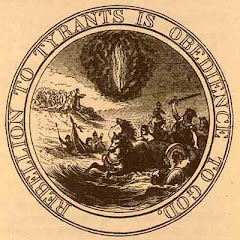Last night as I left work, I ran across a friend who asked me if I'd bought and read "Killer Angels" yet. He's a big civil war officianado, and he views that war as the turning point of warfare for all time. He's right, but in the course of our conversation, I was able to teach him something. Jay pointed out that the cannons of the civil war finally contained rifling and that it somehow made the cannons more accurate and further reaching, which is what ended the line warfare that had marked war for millenia.
Rifling is a simple but ingenious device. Simply put, a rifled barrel includes grooves along the inside of the barrel that help the projectile leave the weapon with better direction. Until rifling came out, bullets left the barrel with a corkscrew motion. That meant that they waffled in a circle and that they could theoretically miss someone directly in front of you if they happened to spin in a circle at exactly the right moment and that they could not reach targets as distant as an arrow. Arrows followed a parabolic path. Bullets followed a series of offset circles. Rifling made the projectile move along a straighter path, hence it allowed them to hit targets further away with greater accuracy than ever before.
The shortest distance between two points is a straight line. Rifling narrowed the vector of travel and kept the ball from waffling in the air. Rifling kept the bullet true, and the longer it flew straight, the more likely it was to hit that at which it was aimed. At the beginning of the war, armies relied on vollies of massed fire; by the end, Sharpshooters were picking off officers, once outside the range of rifles, on purpose so as to sew confusion in the ranks.
Everyone likes things that are true. We like true friends, true stories, true 2x4s in the frame of our house, etc. Something that is true is something we can count on to be where we need it to be when we need it there. Once set in motion, changes in our lives, if properly rifled, can help us hit whatever target at which we aim. If we don't hit them, it's because we haven't rifled our lives correctly.
I love in the Sword in the Stone where Merlin goes with Arthur to the castle. As they wander off, the wolf in tow in hope of a meal, Merlin tells Arthur, "You've got to have a direction." Until then, he has just led the way, but then he asks what direction the castle was. Arthur informs him that it's in the other direction completely.
If you are not headed in the right direction, it matters very little where you go. However, once you head in the right direction, you will make progress, see fruits, no matter how laboriously slow your progress may be.
Rifling is a simple but ingenious device. Simply put, a rifled barrel includes grooves along the inside of the barrel that help the projectile leave the weapon with better direction. Until rifling came out, bullets left the barrel with a corkscrew motion. That meant that they waffled in a circle and that they could theoretically miss someone directly in front of you if they happened to spin in a circle at exactly the right moment and that they could not reach targets as distant as an arrow. Arrows followed a parabolic path. Bullets followed a series of offset circles. Rifling made the projectile move along a straighter path, hence it allowed them to hit targets further away with greater accuracy than ever before.
The shortest distance between two points is a straight line. Rifling narrowed the vector of travel and kept the ball from waffling in the air. Rifling kept the bullet true, and the longer it flew straight, the more likely it was to hit that at which it was aimed. At the beginning of the war, armies relied on vollies of massed fire; by the end, Sharpshooters were picking off officers, once outside the range of rifles, on purpose so as to sew confusion in the ranks.
Everyone likes things that are true. We like true friends, true stories, true 2x4s in the frame of our house, etc. Something that is true is something we can count on to be where we need it to be when we need it there. Once set in motion, changes in our lives, if properly rifled, can help us hit whatever target at which we aim. If we don't hit them, it's because we haven't rifled our lives correctly.
I love in the Sword in the Stone where Merlin goes with Arthur to the castle. As they wander off, the wolf in tow in hope of a meal, Merlin tells Arthur, "You've got to have a direction." Until then, he has just led the way, but then he asks what direction the castle was. Arthur informs him that it's in the other direction completely.
If you are not headed in the right direction, it matters very little where you go. However, once you head in the right direction, you will make progress, see fruits, no matter how laboriously slow your progress may be.






No comments:
Post a Comment